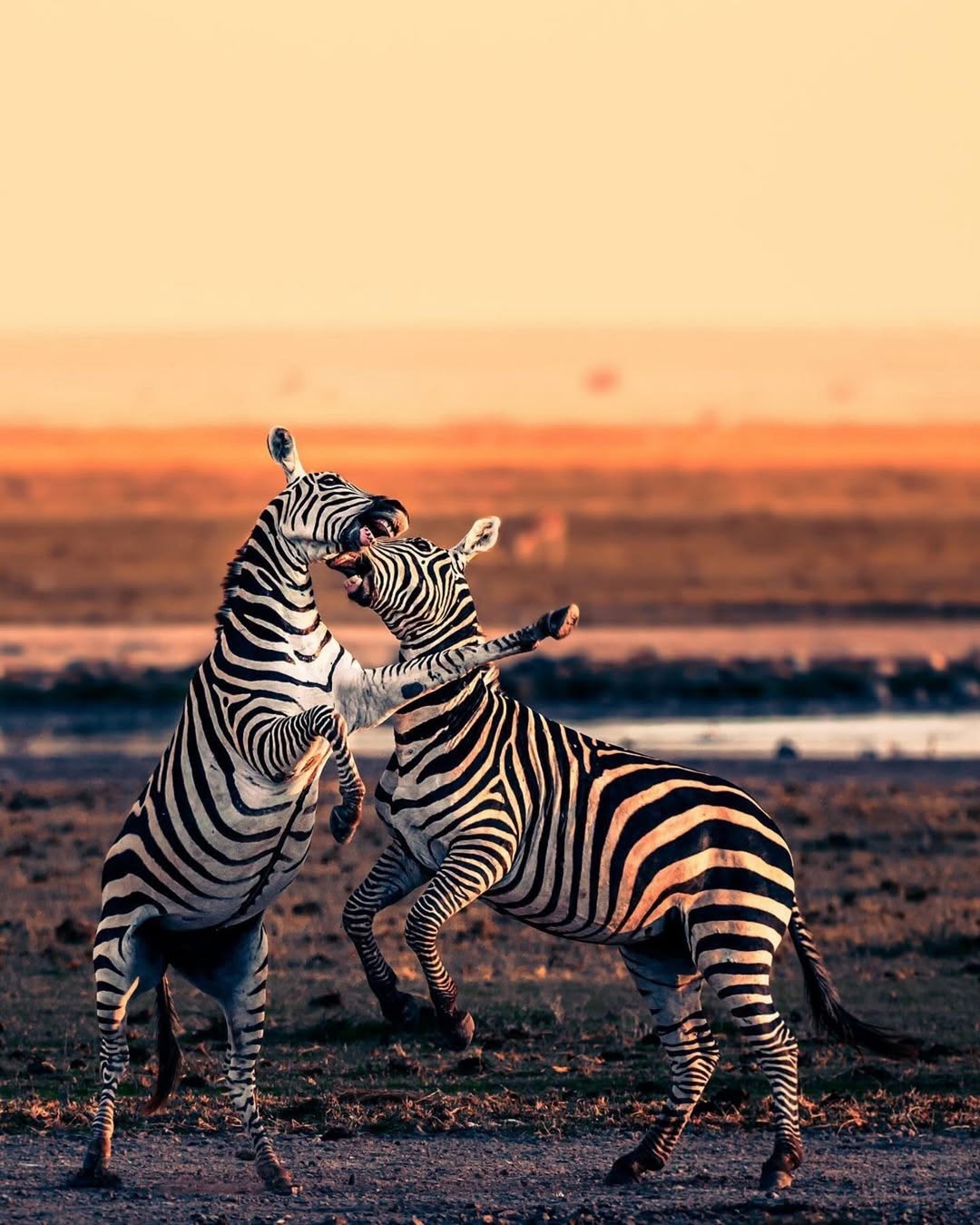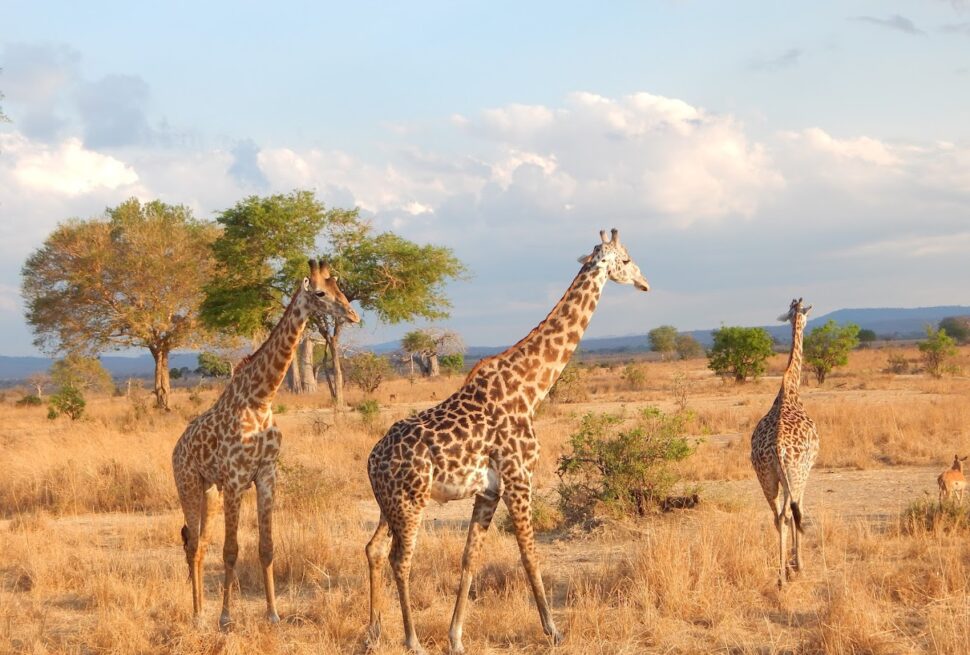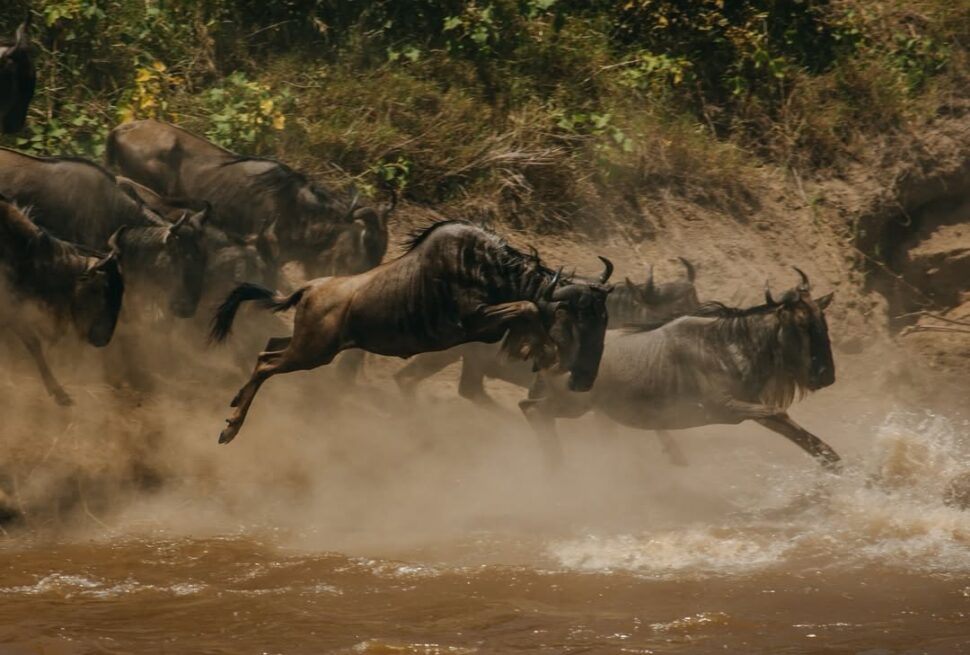The Great Wildebeest Migration, often referred to as "The World’s Greatest Wildlife Spectacle," is a natural phenomenon that captures the imagination of travelers worldwide. Spanning Kenya and Tanzania, this epic journey involves millions of wildebeest, zebras, and other wildlife moving in search of greener pastures.
The Migration is one of nature’s greatest paradoxes: timing is absolutely vital, but there is no way to predict the timing of the animals’ movements. We know that the wildebeest (and a smattering of zebra and antelope) will cross the Mara River – but nobody knows exactly when. We also know that rain will trigger the wildebeest to move onto fresh grazing – but nobody knows exactly when the rain will fall.
This guide will take you through everything you need to know to plan and experience an unforgettable wildebeest migration safari.We’ve helped thousands of travellers to be in the best possible place at the best possible time for the best possible price. If you're looking for expert planning advice, look no further.
What is the Wildebeest Migration?
The wildebeest migration is a continuous cycle of movement involving over 1.5 million wildebeest, along with hundreds of thousands of zebras and gazelles. This annual journey covers the Serengeti in Tanzania and the Maasai Mara in Kenya, following seasonal rainfall patterns and grazing availability. The migration is driven by survival instincts and spans multiple ecosystems, making it a fascinating display of nature's resilience.
How Does it Work?
The Cycle: The migration is driven by the rains and the search for fresh grazing. It is a continuous cycle of movement, covering about 1,800 miles.
Key Challenges: Predators such as lions, cheetahs, and crocodiles, along with natural obstacles like rivers, test the survival of these animals.
Ecological Importance: This migration sustains numerous predators and balances the savanna ecosystem.
What Happens When?
The migration unfolds across different times of the year, with distinct highlights:
With climate change, the long and short rainy seasons in Tanzania and Kenya are no longer as regular or predictable as they once were. The rains can be late or early, which will throw the whole wildebeest calendar out of synch. This is, once again, why it’s important to plan for as much time on safari as possible. You cannot fly in for two nights, see a river crossing and fly out again – nature simply doesn’t work that way.
This is a very general guideline for where the herds are during the year – bearing in mind that the entire Gnu Migration is triggered by rain, which can be early, late or on time:
January to March (Calving Season):
- In January, the herds are in Tanzania’s Serengeti National Park, moving south from the north-east region and into the area near Lake Ndutu.
- From February to March, it is calving season (over 8 000 wildebeest babies are born each day!) so prepare yourself for lots of wobbly calves… and lots of heartbreak as fearsome predators swoop in.
- The Serengeti’s big cats take the lion’s share, but hit-and-run jackals, packs of wild dog, and hyena clans add to the spectacle. It’s a bittersweet ballad; the circle of life played out as a live action drama.
- If the short rainy season (Nov–Dec) produced good grazing, the herds feed frenziedly and remain in the Serengeti’s southern plains until they slowly start moving west in March.
April to June (Northward Migration):
- In April, it’s the start of the long rains (Apr–May) and the herds generally move in a north-westerly direction towards the Moru and Simba Kopjes. The action-packed rutting (breeding) season is in full swing, featuring testosterone-fuelled jousts between males competing for the right to mate with receptive females.
- In May, The massed herds are on the go, huge columns of up to 40 kilometers (25 miles) in length can sometimes be seen as the wildebeest funnel up into the central Serengeti. Everyone’s moving a little quicker now that the calves are stronger.
- From June, the wildebeest are usually in the central Serengeti and getting ready for the toughest part of their odyssey. The herds may have split up, with some already crossing the Grumeti River.
July to October (River Crossings):
- In July, the Great Migration have reached the Grumeti region and northern parts of the Serengeti and are peering closely at the treacherous waters of the Mara River they have to cross into Kenya.
- August is generally considered the best time to witness the dramatic river crossings from the northern Serengeti into the Masai Mara.
- In September, the herds break up into smaller groups, as not all the wildebeest migrate into Kenya. Less than half of the animals remain in the northern Serengeti, the rest are swapping war stories in the Masai Mara. So you could still see wildebeest in the Serengeti (just not the mega-herds) but as a general rule of thumb, the Masai Mara is the best place to witness the Migration in September.
November to December (Return South):
- In a ‘normal year’ in November the short rains have begun, propelling the wildebeest to leave the now denuded grasslands of the Masai Mara and head back into the rejuvenated Serengeti. Bear in mind that the rain can be late or early, which is also unpredictable.
- The herds are generally on the move, but can be seen around the north-eastern parts of the Serengeti where they may split into smaller groups for their journey southward.
- In December, fresh grazing sees the wildebeest move south, covering the northern and eastern Serengeti to feast and prepare for yet another death-defying, 3 000-km (1 900-mi) odyssey.
Best Time to Go.
The ideal time for a safari depends on the migration stage you want to witness.
Remember, the Serengeti and Masai Mara’s abundance of wildlife and wide open landscapes make them fantastic year-round safari destinations.
| Event | Approximate Time | Place | |||
|---|---|---|---|---|---|
| Calving (Birthing) Season | February to March | Southern Serengeti | |||
| Rutting (Breeding) Season | April to May | Western & Central Serengeti | |||
| Grumeti River Crossings | May to June | Central Serengeti | |||
| Mara River Crossings | July to August | Northern Serengeti & Masai Mara | |||
| On the Move | November to January | Masai Mara & Northern Serengeti to Southern Serengeti |
Key Facts to Remember.
- The bulk of the Migration takes place in the Serengeti.
- It’s a year-round, circular journey.
- River crossings cannot be predicted, but generally occur between May and August.
- The animals are strung out across a large area – there are always fore-runners and stragglers.
- Your best chance of seeing river crossing may involve spending all day at a site where the wildebeest have massed. If you are a keen photographer, your best opportunities may occur around midday when the sun and glare are at their harshest, so make preparations to accommodate this.
Ready to Plan Your Migration Safari?
Best Places to Stay on a migration safari.
Accommodation for a Great Migration safari can be divided into two broad categories: permanent lodges and mobile camps.
In the Serengeti (Tanzania):
- Four Seasons Serengeti.
- Singita Grumeti Reserves.
- Serengeti Under Canvas.
- Nomad Tanzania’s Lamai Camp
- Asilia Africa's Olakira Migration Camp.
In the Maasai Mara (Kenya):
- Angama Mara.
- Mara Plains Camp
- Governors’ Camp,.
- &Beyond Kichwa Tembo
Best Migration Safaris.
Our tour ideas are exactly that – sample itineraries to give you an idea of costs, flights and how different destinations work together. All are completely customizable to your personal timing, budget and preferences.



